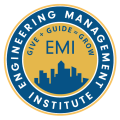In this episode, I talk with Robert K. Otani, P.E., LEED AP, about the importance of scope, schedule, and budget in project management, and the challenges and future of integrating AI in Project Management. He also provides great insights on the potential use cases of AI in project management and the need for data analytics as a first step.
***The video version of this episode can be viewed here.***
Engineering Quotes:
Here Are Some of the Questions I Ask Robert:
- How has your engineering background influenced your approach to project management?
- How did your training at Parsons help you, and what important lessons did you learn there?
- What are the key steps and strategies you prioritize when integrating AI into project management?
- What specific AI tools or technologies have been effective in enhancing project management outcomes?
- What are the main challenges of integrating AI into project management, and do larger firms typically create proprietary software or rely on third-party solutions?
- In the early stages of planning for AI integration in the AEC industry, where do you think it will have the biggest impact on project management?
Here Are Some Key Points Discussed in This Episode About How to Successfully Integrate AI in Project Management:
- Robert’s project management is deeply shaped by his engineering background, particularly in civil and structural engineering, with a focus on water systems. This influences his prioritization of thorough analysis and collaboration to achieve successful outcomes.
- Training at Parsons teaches the importance of balancing scope, schedule, and budget in project management. Any misalignment in these areas can lead to complications. This principle guides effective project management, promoting adaptability and proactive problem-solving.
- AI in project management brings new opportunities, but data limitations are a hurdle. Accessing the needed data for predictive models is tough despite available technology. For example, forecasting project profitability lacks necessary data due to ERP system limitations. Identifying crucial data is vital for better project outcome prediction.
- The industry lacks specific AI tools for project management, hindering progress. Efforts to clean and prepare data are underway, but effective AI implementation requires more information. While data analytics is a first step, further progress needs more time and data for model training.
- Integrating AI into project management faces challenges such as customization to company needs and defining success metrics. While larger firms like Salesforce offer AI solutions like Einstein, smaller companies are still considering AI integration. However, industry leaders are establishing engineering AI teams to customize project management tools, indicating a move toward proprietary software within larger firms.
- In the AEC industry’s initial AI integration, the major impact on project management will likely be predictive analysis. This means forecasting finances and spotting potential staffing, client, and scheduling issues. AI can help managers plan better, reduce risks, and boost project efficiency.
More Details in This Episode…
About Robert K. Otani, P.E., LEED AP

About the Host: Matthew Douglas

Most recently, during his time working for the public sector, he has taken the role of Public Works Operations Manager. There he led quite a few public infrastructure rehabilitation projects and implemented new asset management technologies at a very young age. It is here that the passion for “fixing what’s broken” has developed.
Sources/References:
Thornton Tomasetti
AECT 033: How AI and ML Are Revolutionizing Engineering Design and Construction
Parsons Brinckerhoff (Now WSP)
ERP (Enterprise Resource Planning) systems
Salesforce
Connect with Robert K. Otani, PE LEED AP, on LinkedIn
This Episode Is Brought to You by PPI

We would love to hear any questions you might have or stories you can share on how to successfully integrate AI into project management.
Please leave your comments, feedback, or questions in the section below.































